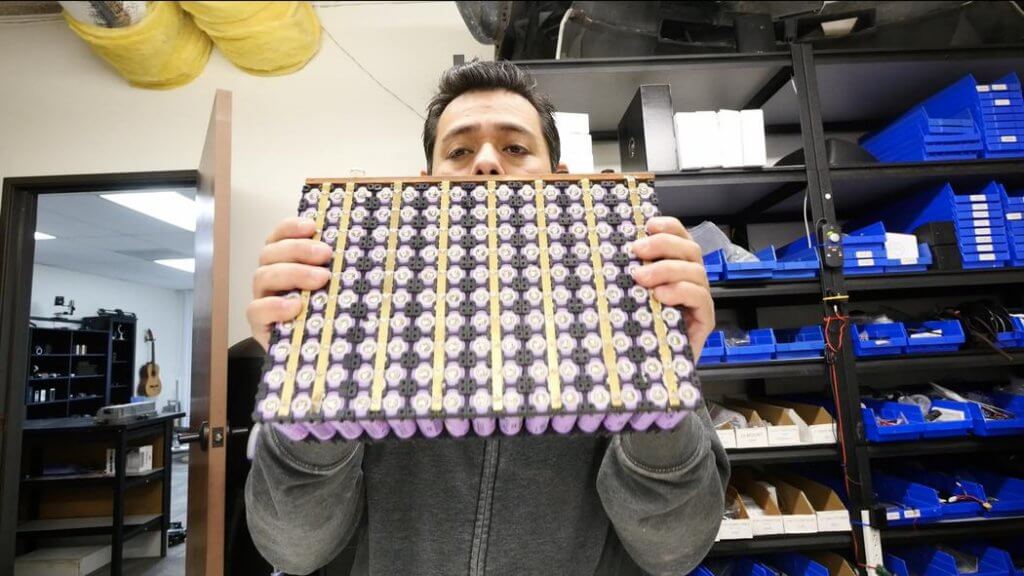DIY powerwall enthusiasts rival Tesla in home energy storage units
Tesla first announced the Powerwall in 2015—a rechargeable lithium-ion battery energy storage unit intended for home usage that retails at over €5,000. Now, on social media and online forums, users are sharing DIY powerwall instructions involving recycled laptop batteries, enabling people to power their homes at a fraction of the cost.
Several powerwall hobbyists have created rigs with much more storage capacity than the 14 kWh Tesla offers. YouTuber, Daniel Römer, claims to have built a powerwall that can store over 100 kWh—over seven times what the Tesla version can store. Another YouTuber, Peter Matthews, says he’s made a battery that can store 40 kWh of energy that harvests power from over 40 rooftop solar panels.
A growing online community
Matthews also founded DIYpowerwalls. With over 6,000 members, it’s the most popular powerwall Facebook group. YouTubers like Römer and Matthews have gathered large followings, signalling the popularity of the trend.
Among the most known DIY powerwall YouTubers is Jehu Garcia, who boasts a channel subscriber base of over 100,000. Garcia plans to build a battery system to power a recycling facility; it would be capable of storing 1 megawatt of power or 1000 kWh.
Alternative energy enthusiasts recommend using 18650 lithium-ion batteries. These batteries can be found inside electronics, like laptops. They can be purchased online, from a computer store, or second-hand—which also helps reduce waste. According to Carl E. Smith, the CEO and president of Call2Recycle, approximately 95 per cent of consumer batteries sold in the US are ultimately thrown away, when almost all batteries can be recycled.
 Image: Jehu Garcia
Image: Jehu Garcia
It takes hundreds or thousands of batteries to store a significant amount of power. Therefore, purchasing batteries online, which typically go for over €5 a piece, can run a bill larger than the Testa price point. It can be incredibly time consuming to locate that many second-hand batteries and build a powerwall on a budget. Additionally, laptop manufacturers don’t provide consumers with recycled batteries and also discourage hobbyists from reusing batteries, claiming their intended use is for brand laptops only.
Some batteries have a limited lifespan, so alternative energy enthusiasts typically test the voltage of the batteries. They also ‘cycle’ the battery, which means depleting its energy completely, then recharging it to capacity.
Once the batteries are acquired and tested, hobbyists arrange the cells into packs. Pre-made battery holders can be purchased online, however many people design and build their own. The completed rig is hooked up to an inverter and mounted to the inside of a shed, for example. Most hobbyists don’t keep their powerwalls inside their homes for safety reasons or to comply with city regulations.
Risk of fire if installed incorrectly
There are risks associated with building your own powerwall: fusing together hundreds of recycled batteries could cause a fire. To address this danger, hobbyists have been installing battery management systems (BMS), which monitor the powerwall and notify the user when it’s getting too hot, for example.

